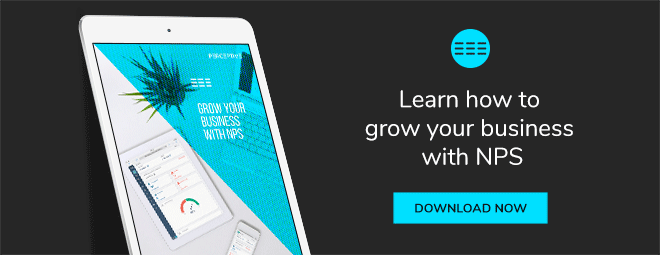No one likes a negative score, but it’s not something we recommend anyone actively avoid—or exclude—even if a score is a result of human error. Retaining all your survey responses is best practice and better for your business all round, because, in the majority of cases, excluding data can cause more problems than it solves.
Here’s why:
1. Cherry-picking data skews results
Cherry picking data skews the results and insights a NPS programme generates. The result? Information that is misleading—or even outright wrong. Information that your company will then use in its decision-making, with potentially disastrous consequences.
To make the right decisions, you need a full picture of your business—unfiltered, warts and all.
Learn more: Dial up your NPS and your business with our free guide Grow your business with NPS
2. Problem areas don’t improve
Including all scores—the good, the bad and the ugly errors—can say far more about the health of your business, than if you choose to only show one side of it. Particularly when it comes to errors. Excluding these in your NPS feedback can cause other problems in your business to go undetected.
For example: A customer might receive a personal NPS survey for a real estate agent who was not involved in their recent property sale. The result is a luke-warm response. While disappointing to the agent, the error highlights another, greater, problem in the business’s administration and database.
Excluding this error not only means the issue goes unnoticed, but it removes any opportunity for your business to address it. Perhaps it is a data entry error, or a sign that your database systems are in dire need of an overhaul. Without that error in the data, there’s no way to know. The issue will keep happening, and potentially cost you good and useful feedback from further clients.
4. You frustrate your customers
Errors happen. We estimate one to two per cent of survey responses will have an error of some kind: surveys get sent to the wrong customer or customers click 0 thinking it is a 10. This is normal. But avoid forcing clients to retake a survey. Doing so can come across as pushy and further degrade the customer’s experience with your business. What’s more, such actions are more likely to fuel an even worse response and potentially damage your brand should customers share the experience with friends and colleagues.
5. It encourages the wrong attitude towards NPS
NPS is not about the number. It is a tool for improving customer experience. NPS is designed to help businesses focus on their customers.
When internal departments, teams and even individuals try to skew their NPS results to make themselves look good—or for personal gain, particularly prevalent when high scores are incentivised—the team/department/businesses ceases to focus on the customer.
Instead, they focus on winning—for themselves. This defeats the whole point of an NPS programme and hampers the true potential that programme could deliver. Moreover, such behaviour is a disservice to your future customers, who may base their decision to shop/sell with you on your skewed feedback. It is both disingenuous and misleading.
While there may be times when it is pertinent to remove a customer’s NPS feedback, such as if they are deceased or if their score is a result of something beyond your company’s control (for example, the 2008 Financial Crisis), our first recommendation is to retain all the feedback you collect.
Think of it like a flu jab—it’s not necessarily pleasant at the time, but accepting it now could save you greater pain down the track. And your business will be all the stronger for it.
Want to dial up your NPS and your business? Download our free guide Grow your business with NPS with NPS.

